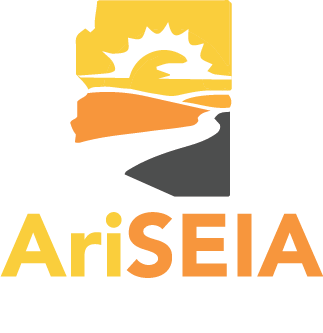|
Line Siting Committee
Arizona Corporation Commission 1200 W. Washington Street Phoenix, AZ 85007-2996 RE: Obed Meadows CEC, Docket No. L-21254A-23-0184-00222 Chairman and Committee Members, The Arizona Solar Energy Industries Association (AriSEIA) submits this letter in opposition to requiring a System Impact Study (SIS) in advance of obtaining a Certificate of Environmental Compatibility (CEC). The legal briefs of the applicant, Arizona Public Service (APS), and Tucson Electric Power (TEP) all agree that such a requirement is outside the authority of the Line Siting Committee. Further, such a requirement would needlessly delay gen-tie applications. The legislature via HB 2496 and the Commission via dockets RLS-00000A-23-0251 and ALS-00000A-22-0320 and the Governor’s Office via signature of HB 2496, have all indicated that the goal of the State of Arizona is to expedite these renewable energy projects, not add additional bureaucratic hurdles and delay. The Line Siting Committee has been issuing CECs without SISs and it is not clear why that would need to change now. Testimony in this case, as well as the legal brief of APS, make clear that the absence of a SIS is not the fault of the applicant. There is a backlog of these studies, which is outside the control of renewable energy developers. Transmission Providers throughout the state of Arizona, including the state’s two largest utilities: APS and Salt River Project (SRP), are currently working through significant queue reforms to address interconnection backlogs. Proposed queue reforms will materially impact the timeline of interconnection studies, the requirements for projects to enter and stay in the interconnection queue, and the commercial expectations of projects when bidding into Request for Proposals (RFPs). Such queue reform is expected to introduce withdrawal penalties that will fundamentally change the way a project is developed, creating a new model whereby a project is incentivized to first acquire all its permits (including a CEC), obtain off-take, and then enter the interconnection queue. Having a SIS prior to filing for a CEC would be counter to the intent of queue reform, and a third-party power flow study would be expensive and redundant to already required utility interconnection studies. While the timeline around queue reform implementation is uncertain, FERC Order 2023 indicates an effective date is likely by the end of 2023 or in early 2024. AriSEIA strongly advocates that the Line Siting Committee adhere to the purpose and intent of the Line Siting statute (A.R.S. 40-360.06); its prior decisions on applications that did not have a SIS; the clear intent of the legislature, Governor’s Office, and Commission to reduce Line Siting delay; and the Federal Energy Regulatory Commission’s (FERC) queue reform process and not require a SIS prior to obtaining a CEC. A requirement to have a SIS may have unintended consequences that limit the ability for projects to reach operations in a timely manner. Sincerely, /s/ Autumn T. Johnson Executive Director AriSEIA (520) 240-4757 [email protected]
0 Comments
Leave a Reply. |
AriSEIA NewsKeep up with the latest solar energy news! Archives
July 2024
Categories
All
|
NEWS
See what AriSEIA is up to on the policy front.
The Arizona Solar Energy Industries Association (AriSEIA) is a 501(c)(6) non-profit trade association representing the solar, storage, and electrification industry, solar-friendly businesses, and others interested in advancing complementary technologies in Arizona. The group's focus is on education, professionalism and promotion of public policies that support deployment of solar, storage, and electrification technologies and renewable energy job growth and creation. |
FOLLOW Us |
Copyright © 2019 AriSEIA - All Rights Reserved

 RSS Feed
RSS Feed
